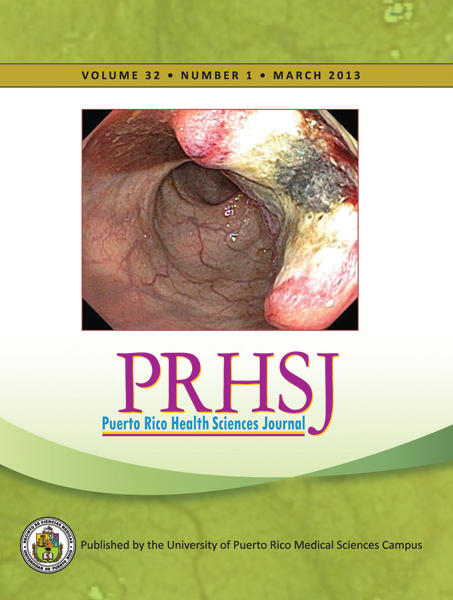Abstract
Objective: Persistent infection with high-risk (HR ) HPV is a necessary risk factor for the development of cervical cancer. Information on HPV infection is limited in Puerto Rico. This study determined the distribution of HPV types and the association of HR - HPV types with cervical pathology in a clinic-based sample of women in PR. Methods: Data from 92 female participants aged 18 to 34 years and recruited from the University of Puerto Rico-Gynecology Clinic, were analyzed. Cervical cytology was performed. HPV testing was performed using L1 consensus primer PCR with MY09/MY11 primers and typed by dot-blot hybridization. Logistic regression modeling was used to determine the crude and covariate adjusted association between HR -HPV and cervical pathology. Results: Twenty percent (n=18) of the patients had abnormal cytology, 45.7% (n=42) were HPV positive, and 30.4% (n=28) were HR HPV-positive. Women infected with HR -risk HPV types were 7.9 (95% CI = 2.5-25.5) times more likely to have abnormal cytology as compared to women without HR infection when adjusted by age and age at first sexual intercourse. Conclusion: The burden of HPV infection was high, and, as expected, HR HPVs were strongly associated with dysplasia. A population-based study is needed to estimate HPV prevalence and its association with related malignancies in our population. This will be of great value in determining disease burden and will increase awareness of the HPV vaccination in our population.
Authors who publish with this journal agree to the following terms:
a. Authors retain copyright and grant the journal right of first publication with the work simultaneously licensed under a Creative Commons Attribution License that allows others to share the work with an acknowledgement of the work's authorship and initial publication in this journal.
b. Authors are able to enter into separate, additional contractual arrangements for the non-exclusive distribution of the journal's published version of the work (e.g., post it to an institutional repository or publish it in a book), with an acknowledgement of its initial publication in this journal.
c. Authors are permitted and encouraged to post their work online (e.g., in institutional repositories or on their website) prior to and during the submission process, as it can lead to productive exchanges, as well as earlier and greater citation of published work (See The Effect of Open Access).
